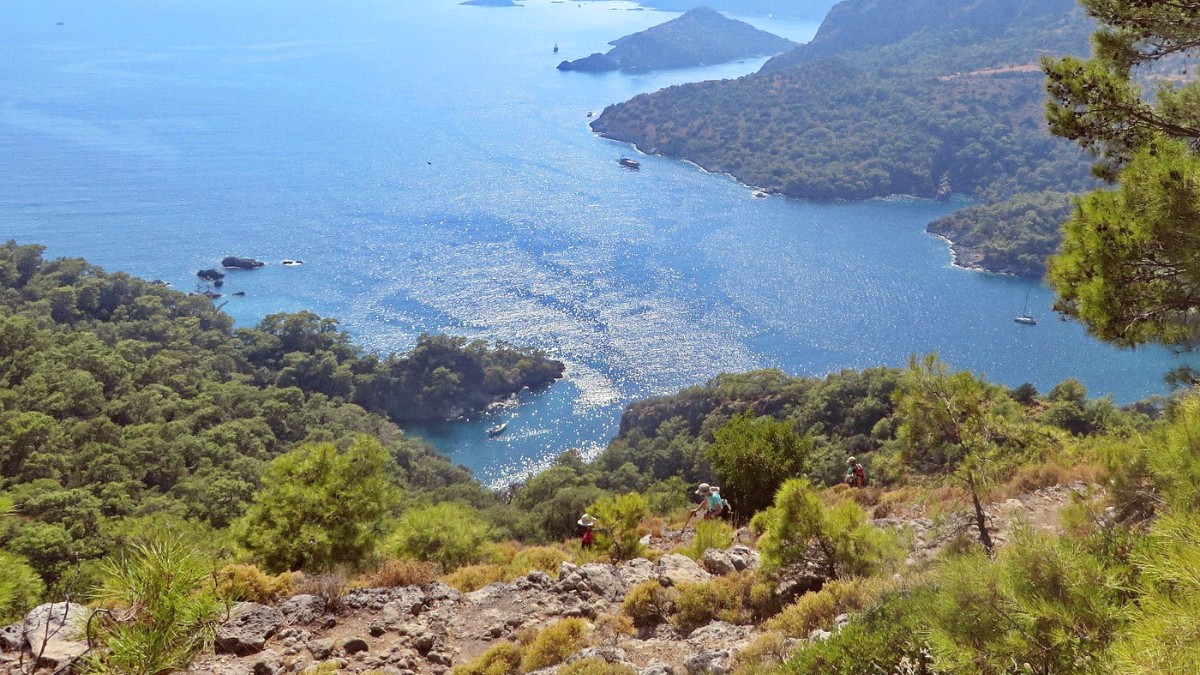
Mediterranean Coast, Turkey
Spring (April-May): Temperatures range from a comfortable 18-25°C (64-77°F). Precipitation is low, and humidity levels are pleasant. The sea begins to warm up, supporting swimming towards late May. Spring brings lush greenery to the landscape.
Summer (June-August): This is the hottest period. Temperatures often exceed 30°C (86°F) and can reach 35-40°C (95-104°F) in July and August. Rainfall is very low. High humidity creates a more intense heat. Sea temperatures are warm, typically 24-28°C (75-82°F), ideal for swimming and water sports.
For a lively beach holiday with all services available, summer fits well. For a balance of good weather, fewer crowds, and lower prices, the shoulder seasons are ideal. For tranquility and focus on hiking or cultural exploration, the low season presents an unique, quiet charm.
Summer's extreme temperatures call for careful attention to hydration and Sun protection.
Peak tourism
Warmest sea temperatures.
Crowded, highest prices, intense heat.
Balanced experience
Pleasant temperatures, fewer crowds, lower prices.
Some businesses may have reduced hours, higher chance of late October rain.
Tranquil escape
Very few tourists, peaceful atmosphere, significantly lower prices.
Many businesses close, cooler temperatures, limited water activities.
April to October conditions. May-June and September-October present pleasant temperatures and stable air currents for longer flights.
June to September presents the warmest sea temperatures for swimming and extended beach days.
April-May and October-November avoid intense summer heat.
May to October presents optimal weather and sea conditions for full-day excursions.
Operators typically run full schedules from May to October.
Many hotels, restaurants, and tour operators close for the winter.
Snow at sea level is rare, even during winter months.
Entry requirements change based on your nationality. Confirm the latest information well before your trip.
Turkey operates an e-Visa system for many nationalities, simplifying the application process. Travelers from countries like the USA, Canada, Australia, and most European Union countries typically apply for an e-Visa online before travel.
Upon arrival, specific documents might be requested by immigration officers.
The e-Visa cost changes by nationality:
Ölüdeniz hosts experiences for every budget, from cost-conscious backpackers to luxury seekers.
The official currency is the Turkish Lira (TRY). The exchange rate for the Turkish Lira fluctuates. Check current rates frequently before and during your trip using reliable sources like Google or XE.com.
ATMs are widely available in Ölüdeniz, Hisarönü, Ovacık, and Fethiye. Withdrawing Lira from ATMs generally presents better exchange rates than dedicated currency exchange counters. Inform your bank of your travel plans to avoid card freezing. Visa and Mastercard are widely accepted in hotels, larger restaurants, and shops. American Express acceptance is less widespread. Carry cash for smaller purchases, local markets, dolmuş fares, and some smaller, local eateries.
Daily costs: USD 40-70 / TRY 1280-2240 (estimates for May 2024)
Hostel dorm or basic guesthouse (TRY 400-800 / USD 12-25)
Street food or local eateries (TRY 400-800 / USD 12-25)
Mainly dolmuş, walking (TRY 50-100 / USD 1.5-3)
Daily costs: USD 70-150 / TRY 2240-4800 (estimates for May 2024)
3-star hotel or mid-range apartment (TRY 1000-2500 / USD 30-78)
Mid-range restaurants and local cafes (TRY 800-1500 / USD 25-47)
Occasional taxis, regular dolmuş use (TRY 100-300 / USD 3-9)
Daily costs: USD 150+ / TRY 4800+ (estimates for May 2024)
4-5 star hotel or private villa (TRY 3000+ / USD 94+)
Fine dining, international cuisine (TRY 1500+ / USD 47+)
Private transfers, rental car (TRY 500+ / USD 15+)
| Category | Item/Service | Price Range (TRY / USD) |
|---|---|---|
| Accommodation (per night) | Hostel Dorm / Budget Guesthouse | TRY 400-1500 / USD 12-47 |
| Meals (per person) | Street Food / Local Restaurant | TRY 100-500 / USD 3-15 |
| Attractions | Paragliding (tandem) / Boat Trip (full day) | TRY 2500-5000 / USD 78-156 (paragliding) TRY 800-1500 / USD 25-47 (boat trip) |
Review these considerations before your trip.
No specific vaccinations are mandatory for entry to Turkey from the United States.
Ensure routine vaccinations are current (MMR, Diphtheria-Tetanus-Pertussis, Varicella, Polio, annual Flu shot).
Consult a travel health clinic 4-6 weeks before travel. Hepatitis A, Hepatitis B, and Typhoid are often suggested. Rabies is for rural outdoor activities or animal contact.
Traveler's Diarrhea:
Practice good food and water hygiene. Avoid tap water, uncooked food from street vendors (unless freshly prepared), and ice from questionable sources. Carry Loperamide Anti-Diarrhea Medicine or oral rehydration salts.
Sunburn & Heatstroke: High risk in summer. Use High-SPF sunscreen like Sun Bum Original SPF 50, wear a Wide-brimmed hat, Sunglasses, and light clothing. Hydrate with Bottled water. Seek shade during peak heat (11 AM - 3 PM).
Insect Bites: Use Insect repellent containing DEET or Picaridin. Permethrin on clothing.
Fethiye, 20-30 minutes from Ölüdeniz, has a state hospital (Fethiye Devlet Hastanesi) and private hospitals (e.g., Esnaf Hastanesi, Letoon Hastanesi) with good care, often English-speaking staff.
Ölüdeniz has local clinics for minor ailments and numerous pharmacies (Eczane) providing basic medical advice and over-the-counter medications. Pharmacists are often knowledgeable.
For all emergencies (ambulance, police, fire), dial 112. This is Turkey's universal emergency number.
Ölüdeniz has a reputation as a very safe destination with low crime rates. Most reported incidents involve petty theft.
Be aware of potential natural occurrences.
Turkey is in an active seismic zone. Minor tremors occur, rarely affecting coastal areas significantly. Major earthquakes are rare in this specific region.
During hot, dry summers, especially inland or near forests, a risk of wildfires presents. Stay informed through local news and follow instructions.
The Blue Lagoon is exceptionally calm. Some open sea areas or beaches further along the coast might have stronger currents. Observe warning flags and swim in designated areas.